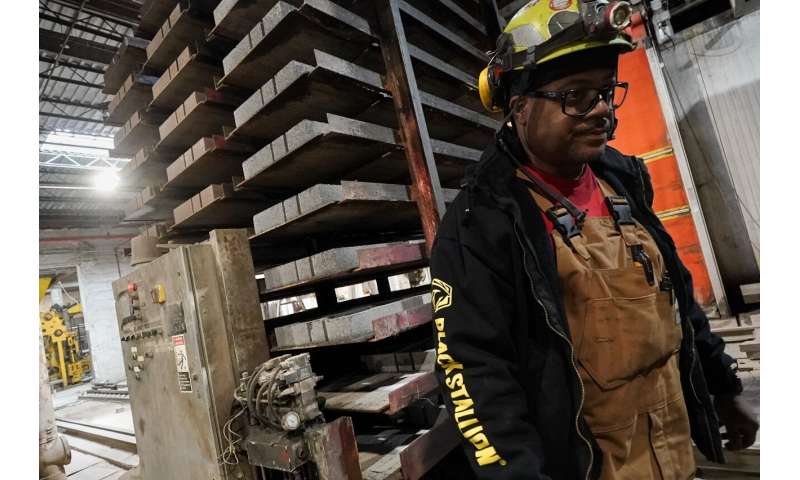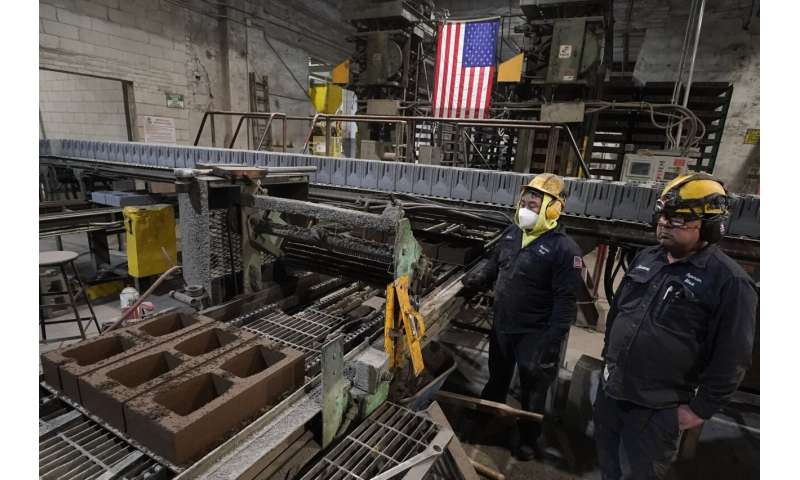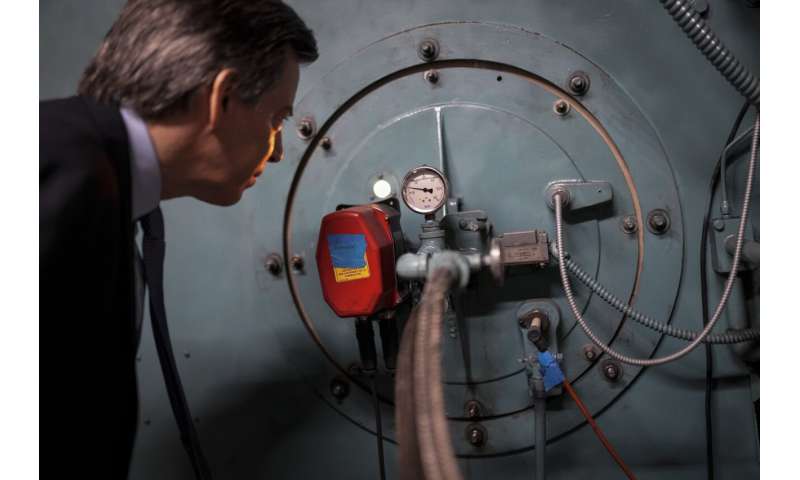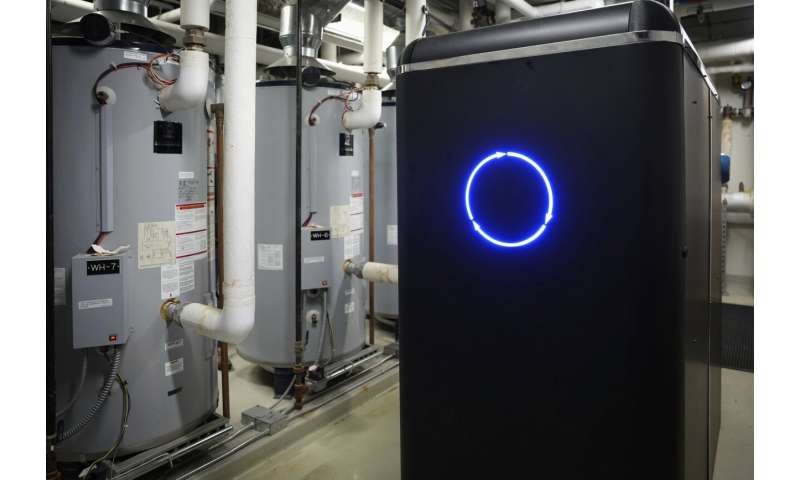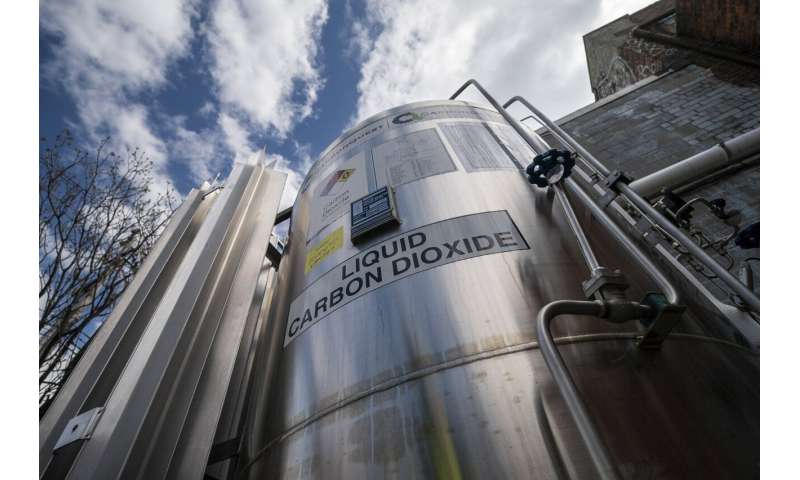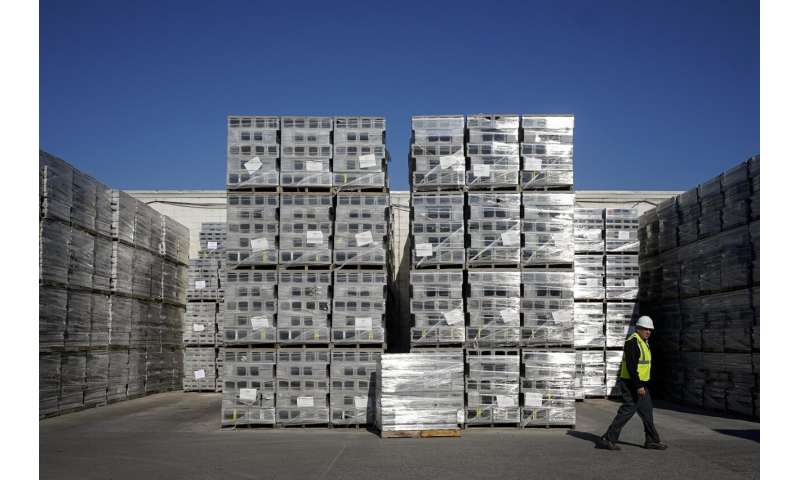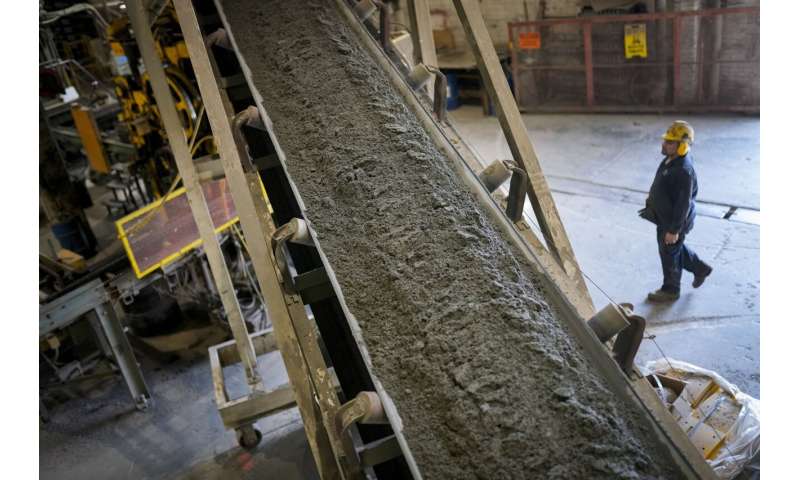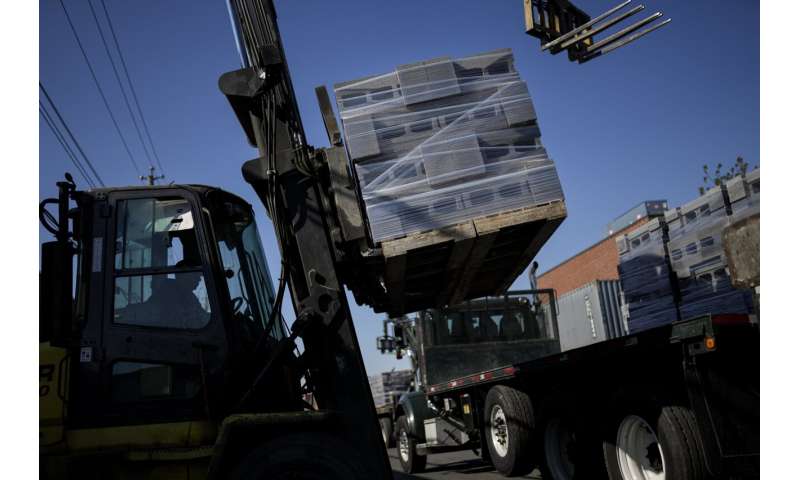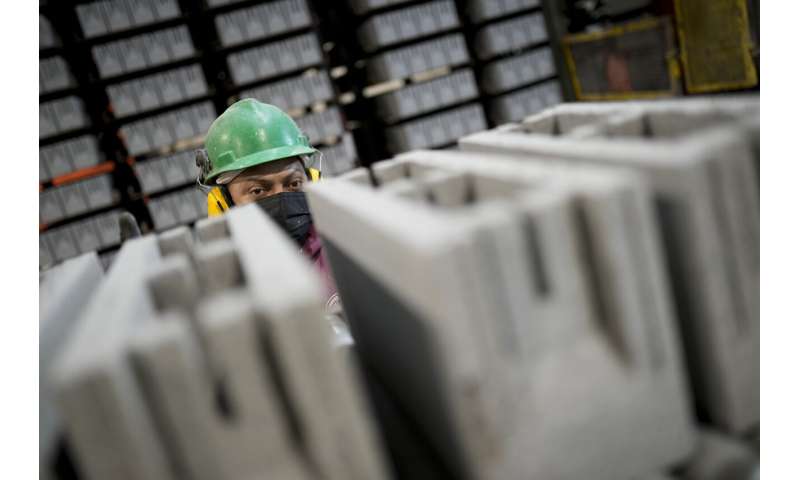[ad_1]
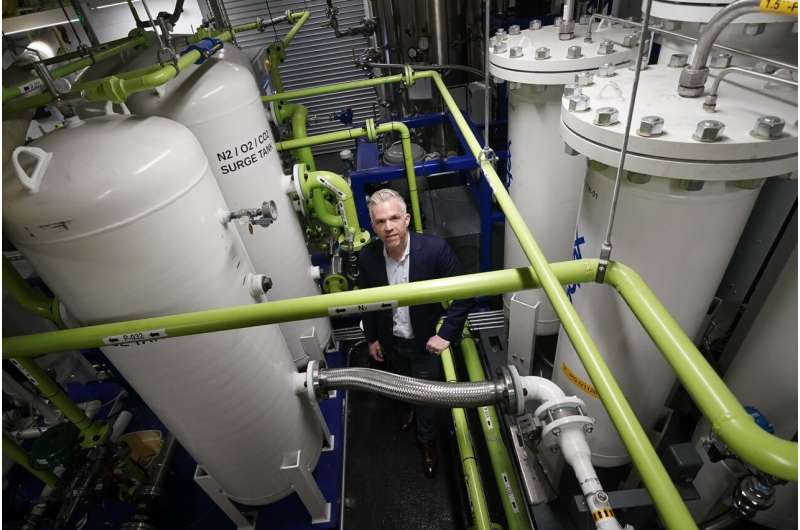
From the outside, the Manhattan high-rise looks like any other luxury building: A doorman greets visitors in a lobby adorned with tapestry and marble.
Yet the basement has a set of equipment seen almost nowhere else in the world. To reduce emissions, the owners have installed twisting pipes and tanks that collect carbon dioxide from the building’s massive, gas-fired boilers.
The goal is to stop carbon dioxide, a climate-warming gas, from entering the atmosphere. In such a vertical city, it’s impossible to address climate change without tackling emissions from buildings. So building owners must make dramatic cuts starting next year or face escalating fines under a new law which affects some 50,000 structures—more than half the buildings in the city. Other cities such as Boston and Denver passed similar laws.
To comply, some property managers are installing carbon capture systems, which strip out carbon dioxide, direct it into tanks and prepare it for sale to make carbonated beverages or soap. In this case, the carbon dioxide is sold to a concrete manufacturer in Brooklyn.
«Time is not on our side, and this type of solution can be installed quickly, cost-effectively and without a major disruption,» said Brian Asparro, chief operating officer of CarbonQuest, which built the system.
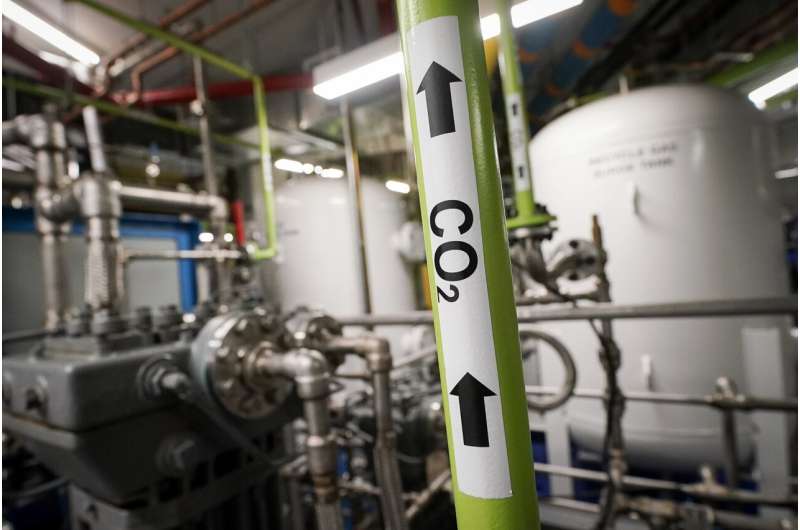
Critics say buildings should be switched to electricity instead.
«Carbon capture doesn’t actually reduce emissions; it seeks to put them somewhere else,» said Anthony Rogers-Wright, director of environmental justice at New York Lawyers for the Public Interest.
It’s unclear whether carbon capture will be recognized by New York City as a qualifying emissions reduction; the city has not decided.
Capturing the culprit
In the Manhattan building’s basement, two 500-horsepower boilers rumble, burning natural gas and releasing carbon dioxide. The boilers produce roughly half the building’s emissions. The other half are generated at power plants where the building buys electricity. The carbon capture system, Asparro said, is trapping about 60% of the boilers’ emissions.
«Boilers like this are installed everywhere, in schools and hospitals around the world,» Asparro said.
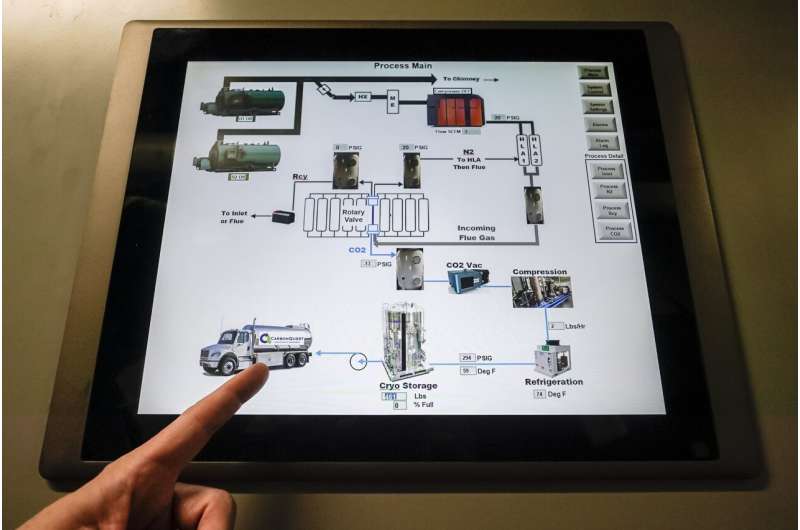
Carbon dioxide and other gases flow from the boilers over a special material that separates out the carbon dioxide in a system that occupies two former parking spaces. Then it’s compressed and cooled to minus-10 degrees Fahrenheit (minus-23 Celsius), turning it to liquid.
Pipes lead to spigots outside the building, where a truck loads up with the liquefied CO2 and takes it to a concrete manufacturer in Brooklyn.
The apartment building is trying to reduce energy in other ways, too, said Josh London, senior vice president at Glenwood Management Corp. It has computerized motors, fans and pumps, LED lighting and battery storage. The company plans to install carbon capture systems in five more buildings this year.
Nearly 70% of New York City’s large buildings have steam boilers like these that run on natural gas or oil, according to NYC Accelerator.
The city law requires all buildings over 25,000 square feet to reduce emissions. In Minnesota, Radisson Blu Mall of America, a hotel, has installed a system that captures carbon dioxide that’s eventually used to make soap.
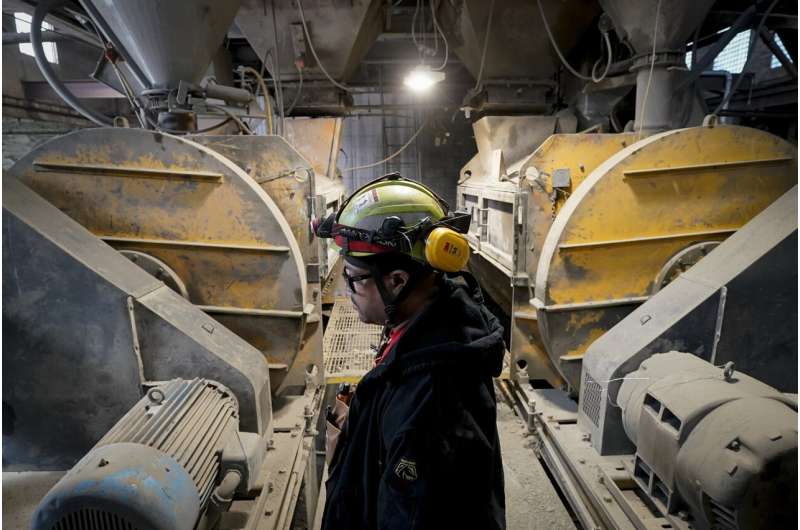
Mineralizing into concrete
Over in Brooklyn, the floor shakes as yellow machines churn at Glenwood Mason Supply Company Inc., a concrete maker unrelated to Glenwood Management Corp. Grey concrete blocks rattle down a conveyor under a din of metal gears and motors.
A truck arrives with liquefied carbon dioxide and then, using equipment provided by a company called CarbonCure, it’s compressed and turned into a solid.
As concrete ingredients churn, the carbon dioxide, now essentially dry ice, flows in like a mist. It reacts with calcium ions in cement, a main ingredients of concrete. This forms calcium carbonate, which becomes embedded in the concrete.
Once carbon dioxide is in that mineral state, it’s secure and it won’t be released unless heated to about 900 degrees Celsius (1,652 degrees Fahrenheit), said Claire Nelson, a geochemist who specializes in carbon capture at Columbia Climate School.
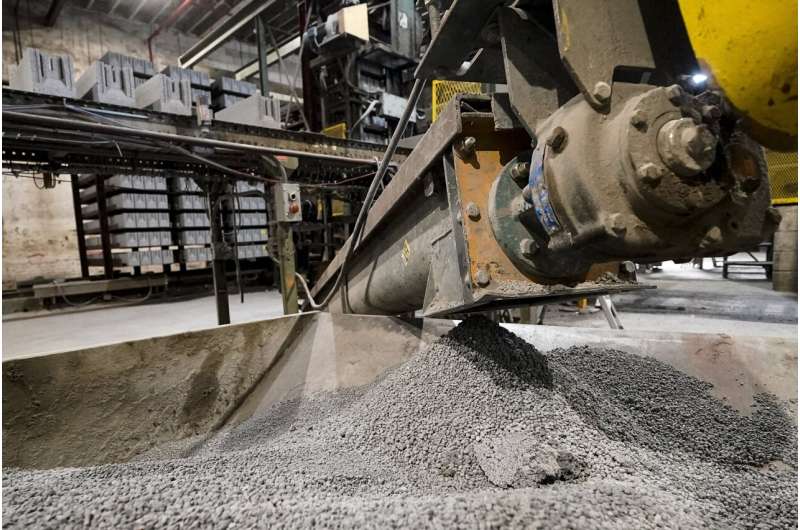
«So unless a volcano erupts on top of your concrete building, that carbon is going to be there forever,» Nelson said.
Adding mineralized carbon dioxide to concrete can reduce its carbon footprint, though not by much. On average, concrete producers using CarbonCure technology reduce their carbon footprint by 5% to 6%, said Robert Niven, CEO of CarbonCure. But that is still meaningful, because making concrete contributes significantly to climate change.
Questions remain
Many environmental groups remain skeptical of carbon capture, favoring investments in renewable energy. They also fear it could be unsafe to store carbon dioxide in a residential dwelling.
After a carbon dioxide pipeline ruptured in Satartia, Mississippi, in 2020, 45 people sought medical attention at local hospitals, according to a report from the Pipeline and Hazardous Materials Safety Administration. People exposed to high concentrations of carbon dioxide, the report said, may experience rapid breathing, confusion, elevated blood pressure and increased arrhythmias. Extreme concentrations can lead to death by asphyxiation.
-

A stack of concrete blocks created with liquid carbon dioxide as an ingredient is pulled from a curing kiln at the Glenwood Mason Supply Company, Tuesday, April 18, 2023, in the Brooklyn borough of New York. New York is forcing buildings to clean up, and several are experimenting with capturing carbon dioxide, cooling it into a liquid and mixing it into concrete where it turns into a mineral. Credit: AP Photo/John Minchillo
-

Workers monitor a production line of concrete blocks created with liquid carbon dioxide as an ingredient at the Glenwood Mason Supply Company, Tuesday, April 18, 2023, in the Brooklyn borough of New York. New York is forcing buildings to clean up, and several are experimenting with capturing carbon dioxide, cooling it into a liquid and mixing it into concrete where it turns into a mineral. Credit: AP Photo/John Minchillo
-

Josh London, senior vice president at Glenwood Management Corp., peers into the port hole of a natural gas fired boiler, located in the basement of The Grand Tier luxury apartment building, that his company uses to produce liquid carbon dioxide, Tuesday, April 18, 2023, in New York. New York is forcing buildings to clean up, and several are experimenting with capturing the carbon dioxide, cooling it into a liquid and mixing it into concrete where it turns into a mineral. Credit: AP Photo/John Minchillo
-

A CarbinX unit, which is about the size of two refrigerators, has been installed and is operating at a Radisson Blu in Bloomington, Minn., on March 21, 2023. The system, which captures carbon dioxide, is eventually used to make soap. Credit: Shari L. Gross/Star Tribune via AP
-

A liquid carbon dioxide containment unit stands outside the fabrication building of Glenwood Mason Supply Company, Tuesday, April 18, 2023, in the Brooklyn borough of New York. New York is forcing buildings to clean up, and several are experimenting with capturing carbon dioxide, cooling it into a liquid and mixing it into concrete where it turns into a mineral. Credit: AP Photo/John Minchillo
-

Jeff Hansen, vice president of Architectural Sales & Marketing, walks past stored concrete blocks that were made with liquid carbon dioxide as an ingredient, at the Glenwood Mason Supply Company, Tuesday, April 18, 2023, in the Brooklyn borough of New York. New York is forcing buildings to clean up, and several are experimenting with capturing carbon dioxide, cooling it into a liquid and mixing it into concrete where it turns into a mineral. Credit: AP Photo/John Minchillo
-

Fresh concrete is fed via a conveyor belt into a forming machine, producing blocks designed with liquid carbon dioxide as an ingredient at the Glenwood Mason Supply Company, Tuesday, April 18, 2023, in the Brooklyn borough of New York. New York is forcing buildings to clean up, and several are experimenting with capturing the carbon dioxide, cooling it into a liquid and mixing it into concrete where it turns into a mineral. Credit: AP Photo/John Minchillo
-

A forklift operates a load of concrete blocks, made with liquid carbon dioxide as an ingredient, onto trucks at the Glenwood Mason Supply Company, Tuesday, April 18, 2023, in the Brooklyn borough of New York. New York is forcing buildings to clean up, and several are experimenting with capturing carbon dioxide, cooling it into a liquid and mixing it into concrete where it turns into a mineral. Credit: AP Photo/John Minchillo
-

Workers monitor a production line of concrete blocks, made with liquid carbon dioxide as an ingredient, at the Glenwood Mason Supply Company, Tuesday, April 18, 2023, in the Brooklyn borough of New York. New York is forcing buildings to clean up, and several are experimenting with capturing carbon dioxide, cooling it into a liquid and mixing it into concrete where it turns into a mineral. Credit: AP Photo/John Minchillo
There’s also a risk of leaks, if a truck transporting carbon dioxide gets into an accident, Rogers-Wright said.
Proponents of carbon capture say there are safeguards and the technology installed in Manhattan was permitted by multiple city agencies.
Nelson, the Columbia geochemist, who also started a carbon capture company, says storing natural gas in basements is more dangerous than storing carbon dioxide, and many people accept the risks posed by natural gas.
The biggest challenge, proponents say, is scaling this and other solutions fast enough to make a difference in climate change.
Back in Manhattan, the local utility doesn’t have enough renewable energy to sell to all New York customers, and «with solar, you need a bigger footprint than what we have in a building like this,» London said. He wants to buy wind power when it’s more widely available, but «we can reduce our emissions while we wait,» he said.
© 2023 The Associated Press. All rights reserved. This material may not be published, broadcast, rewritten or redistributed without permission.
Citation:
NYC skyscrapers turning to carbon capture to lessen climate change (2023, May 15)
retrieved 15 May 2023
from https://phys.org/news/2023-05-nyc-skyscrapers-carbon-capture-lessen.html
This document is subject to copyright. Apart from any fair dealing for the purpose of private study or research, no
part may be reproduced without the written permission. The content is provided for information purposes only.
[ad_2]
Source link
